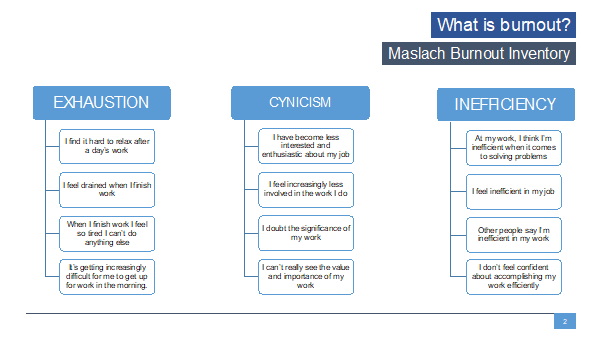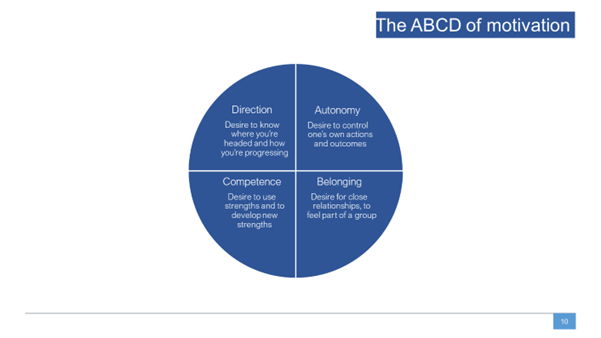Building Organisational Resilience Event – Key Takeaways
Organisational resilience is a vital ingredient needed to navigate the complexities and uncertainties of today's business landscape. To achieve long-term success, organisations need to invest in their workforce and build teams that are resilient to change. We held an exclusive event for 25 HR and Talent Leaders with speaker Ben Hardy, Clinical Professor at the London Business School, who joined us for an interactive and engaging session on how to build organisational resilience.
It was a jam-packed morning, and we covered several topics, but our main three takeaways from the day were:
1. Engagement is a buffer against burnout
According to research conducted by Mental Health UK, 9 in 10 adults in the UK experienced high stress in the past year and 1 in 5 needed to take time off work due to poor mental health caused by pressure or stress. These alarming statistics are likely to rise unless significant action is taken. But do businesses really understand the true causes of burnout and how to counteract it?
For the most part burnout and exhaustion are used synonymously but research shows that typically there are three components to burnout.
- Exhaustion
- Cynicism
- Inefficiency
These can all be present in varying degrees and Ben provided some possible survey questions that are useful to reflect on or could even be circulated around the business if burnout is something your company is concerned about.

“Engagement is the opposite of burnout ”
Engagement isn’t usually considered in relation to burnout. But in reality “engagement is the opposite of burnout” - let’s consider the key features of engagement at work and how they compare to the components of burnout:
- Energy <> Exhaustion
- Dedication <> Cynicism
- Absorption <> Inefficiency
By viewing these areas as a sliding scale, with energy and exhaustion, dedication and cynicism and absorption and inefficiency at each end, it can be used as a tool to identify the multiple layers that make-up burnout and which specific area needs to be addressed when considering staff wellbeing. The more engaged your employees are, the less burnt out they will be and as a result, the more resilient your organisation will be as a whole.
2. The ABCD of motivation

It is well known that engaged employees are more productive. Companies are now facing the reality of having a multi-generational workforce and as a result, the question of how to achieve and maintain employee engagement is becoming even more complex. Humans have intrinsic and extrinsic motivations, and both should be considered when analysing employee engagement. Extrinsic motivation refers to doing something to get a reward such as a pay rise, promotion or to avoid punishments. Intrinsic motivation is when you do something because the activity itself is rewarding. It is argued that for employees to be fully engaged in their work, extrinsic motivation alone is not enough, and intrinsic motivation must come into play.
Ben shared his 4-part framework - the ABCD of motivation. If you have a team member who is demotivated, using this 4-part framework may help to determine what’s missing from their current role and how you can support them better.
- Autonomy – people are happier if they have greater freedom over how they manage both their work and their time. This does not mean ‘do whatever you want’ and there should be degrees of autonomy, depending on task, role, seniority etc.
- Belonging – we all have a desire to feel part of a group, so companies need to make inclusive activities a priority, especially if people are working remotely. That said, inclusive activities should not just include going for drinks after work as not everyone will find this enjoyable. Truly inclusive companies create belonging for everyone.
- Competence – this is key to motivation. People will be more engaged in their work if it challenges them and enables them to develop new strengths. How could you make their work more interesting & challenging?
- Direction – people need to know where they’re going and if they are making progress. Ben’s advice here is to “use company values and high-level strategy, coupled with a growth mindset” as an aid to keep forward momentum.
3. Subtraction
The last principle that Ben introduced was the idea of subtractio n which was a new way of thinking for most people in the room. As humans we have an innate desire to build and acquire things. As hunter-gatherers, we were rewarded when we acquired food, and these systems are still very much present in our brains today. In the workplace, we do the same. If a problem or issue arises, we add meetings, processes and create projects to try to solve and fix the issue – sound familiar?
But as Ben suggested, instead of always focusing on what we can add, what if we took something away? Is there something we can leave out or stop doing to help simplify the situation we’re facing? When we feel stressed or overwhelmed, our ability to make de cisions and work effectively is compromised. By taking elements away, those stress levels will reduce, helping us to be more efficient.
In today’s ever-changing world, the delta between businesses that thrive and businesses that survive grows daily. If the only constant is change, businesses need to embrace it and to learn how to build resilient teams.
Our exclusive Roundtable Events
We love providing an informal, fun and engaging place for our community to meet up, discuss their challenges, network and to foster new ideas through thought-provoking conversations. If you’re a Senior HR or Talent leader and would like to register your interest for future events, please contact Frankie (frankie.youell@instant-impact.com) or register here.
Share this
